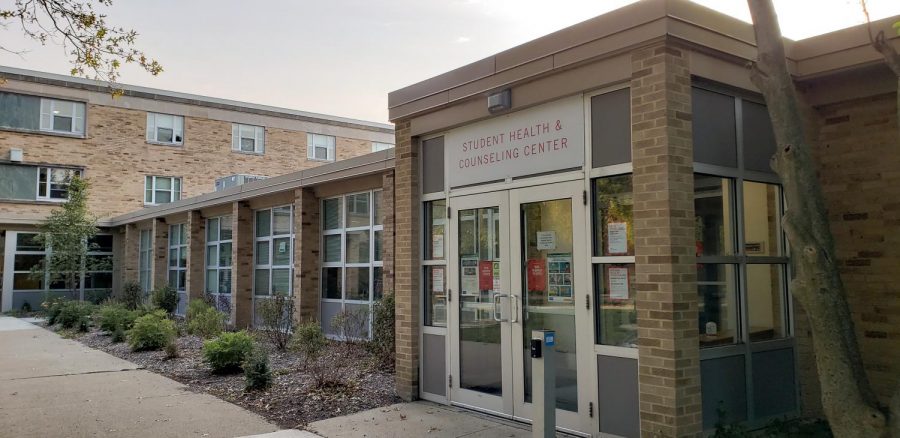Mental Health Resources on Campus are Here to Help
The College has a variety of mental health resources available to its students, including the Counseling Center, Peer Support Center, and SHARE.
Editor’s note: this article mentions self-harm, eating disorders, depression, and anxiety.
As college students in a pandemic, times are tough right now. Our community is fractured, our social lives are dead, our extracurriculars are cancelled, and our classes are emotionally-exhausting. I know it’s taken a toll on every one of us, and feelings of anxiety, depression, fear, and grief have overwhelmed us in the last eight months. That’s why discussions around mental health are necessary now more than ever.
Mental health is an incredibly stigmatized topic, so I understand any hesitation you may have as you read this. It can be so difficult to understand what we’re feeling, to learn how to cope, and to know what we need in our lives to feel healthy, happy, and emotionally-fulfilled. Mental health is also a concern for public health more broadly, including prevention, intervention, and cognitive, behavioral, and emotional wellness.
I started getting involved in mental health work at Oberlin my second year when I took Intro to Peer Helping Skills. I learned how to validate and normalize people seeking help, how to ask open-ended questions, how to be non-directive, how to normalize feelings, and, most importantly, how to listen. Through weekly roleplays, we internalized these skills. We learned how to approach topics like suicide, depression, drug addiction, eating disorders, and a wide range of additional issues. This one year-long course prepared students to listen at the Peer Support Center. Shortly after, I launched a Student Senate campaign designed to mobilize the PSC.
As Chair of the Student Health and Wellness working group on Senate, I spent my year-long term trying to improve Oberlin’s mental health from an institutional standpoint. With the help of Vice President and Dean of Students Meredith Raimondo, co-chair Raavi Asdar and I developed plans for additional programming, increasing resource awareness, and policy recommendations, and pushed for capital projects and better communication between departments with student interface. We presented critical data from mental health surveys to the Board of Trustees and made proposals related to student retention. At present, Asdar and I are building a Mental Health Coalition of invested students, administrators, and faculty to tackle mental health from its many angles. With short and long term projects, we hope to have weekly engagement from invested individuals from across a variety of disciplines.
At present, there are a variety of resources available to students. The Counseling Center has hired two new part-time staff to increase the number of hours of operation and is offering sessions over Zoom that can better and more safely meet the needs of the student body. The Student Help and Resource Exchange will be doing more proactive outreach and will be contacting students twice throughout the semester. SHARE connects students with staff at the Dean of Students Office to facilitate student reporting, offer support systems, and direct students to relevant resources. The Multicultural Resource Center has also offered mental health programming and support specifically for students of color. The PSC will be offering virtual hours in the coming weeks. Obility has offered programming about self-advocacy for disabilities. The list goes on; there are so many people on this campus dedicated to supporting student mental health.
But we still have a long way to go. On-campus students struggle with a range of issues from self-medication to suicidal ideation. These challenges lead many students to leave, withdraw, or transfer. There are long-standing barriers to resources for marginalized students, who are more likely to experience stress — specifically men of color, LGBTQ+ students, international students, and first-years. Currently, first-year engagement at the counseling center is far below expected, which is likely because students aren’t seeking help, not because of a reduction in need.
The path forward has many prospects. Students must demand that the College make mental health support a priority. Students need to participate in the creation of programs, resources, and policy rules that better reflect our needs. Oberlin College should offer training and workshops on building emotional resilience and on responding to suicidal ideation. We need widespread screenings to identify students at risk and frequent mental-health-related campaigns to promote social connectedness and knowledge of campus resources. We need more support for students in substance abuse recovery and post-institutionalization. We need capital projects devoted to improving campus spaces and programs that will better facilitate community building.
Mental health for students in higher education is far from perfect, but there have been advances in public health models that could have a dramatic impact on Oberlin’s mental health. They just require greater collective buy-in from this community and key investments from the College.
This work starts with you. I write to encourage help-seeking behavior and to tell students it’s okay to utilize the resources this campus has for you. Whether it be through interpersonal interactions, art, awareness campaigns, or personal projects, this work in mental health has space for you, so join me in supporting Oberlin College’s mental health at a time when we need each other the most.






